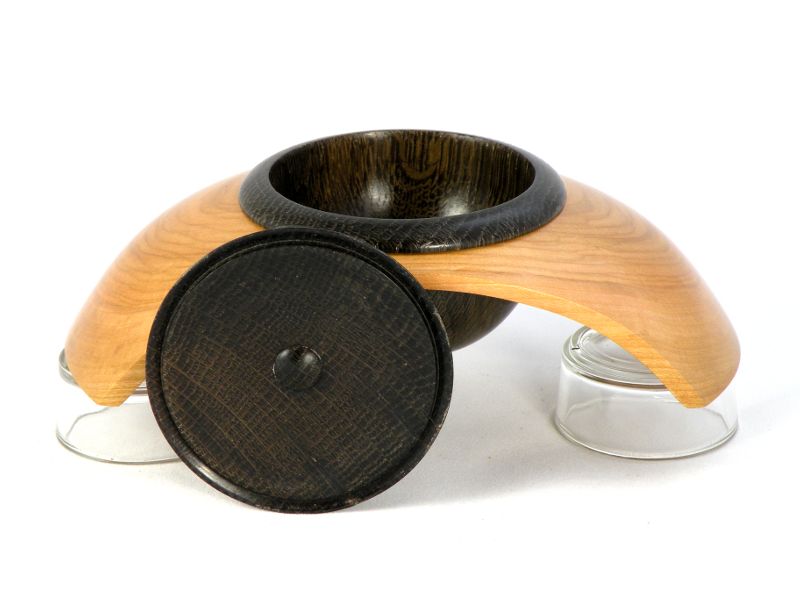Castanea
Established Member
Hi Folks,
I'm Ian in Northampton, I've been turning for a year and I enjoy turning local timber from the nature reserves where I work. I'm making bowls and platters as well as spindle-turning little boxes and tool handles. Lots of chunky out-of-balance pieces of tree go straight from the chainsaw onto my poor little lathe to be gradually knocked into round. The lathe's surviving so far but I'm aware that I am pushing it a bit at times!
I've just got hold of a pile of "bog oak" from the fens of Cambridgeshire. I was told that some of the bog oak is actually bog pine but the piece I've just turned (and messed up by trying to go as thin as I would with more "normal" wood!) looks every inch like a very dark oak. It is oak-hard in the middle gradually getting darker and softer towards the edge by which point it is turning into something resembling peat - hence my loosing this evening's little bowl! It does smell a bit pondy when you cut it but it comes up to a lovely soft shine straight from sanding. I suspect it will take a wax polish very nicely.
Has anyone on the forum had any experience of turning bog oak? I'd appreciate any advice anyone can give me. I've picked up a few bigish bits but I suspect there will be rather limited amounts of useable wood tucked between the cracks and soft bits so I'm keen to avoid ruining too many pieces in the learning process. Rumour has it at these are trees which were alive 5,000 years ago and have been lying in the fenland peat since so the prospect of turning things from something which predates virtually everything I know is rather wonderful. I'd be very grateful for any guidance.
Many thanks and all the best
Ian
I'm Ian in Northampton, I've been turning for a year and I enjoy turning local timber from the nature reserves where I work. I'm making bowls and platters as well as spindle-turning little boxes and tool handles. Lots of chunky out-of-balance pieces of tree go straight from the chainsaw onto my poor little lathe to be gradually knocked into round. The lathe's surviving so far but I'm aware that I am pushing it a bit at times!
I've just got hold of a pile of "bog oak" from the fens of Cambridgeshire. I was told that some of the bog oak is actually bog pine but the piece I've just turned (and messed up by trying to go as thin as I would with more "normal" wood!) looks every inch like a very dark oak. It is oak-hard in the middle gradually getting darker and softer towards the edge by which point it is turning into something resembling peat - hence my loosing this evening's little bowl! It does smell a bit pondy when you cut it but it comes up to a lovely soft shine straight from sanding. I suspect it will take a wax polish very nicely.
Has anyone on the forum had any experience of turning bog oak? I'd appreciate any advice anyone can give me. I've picked up a few bigish bits but I suspect there will be rather limited amounts of useable wood tucked between the cracks and soft bits so I'm keen to avoid ruining too many pieces in the learning process. Rumour has it at these are trees which were alive 5,000 years ago and have been lying in the fenland peat since so the prospect of turning things from something which predates virtually everything I know is rather wonderful. I'd be very grateful for any guidance.
Many thanks and all the best
Ian

























































